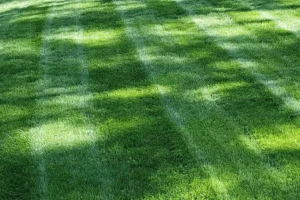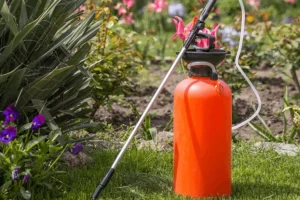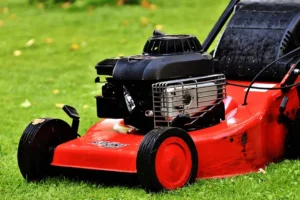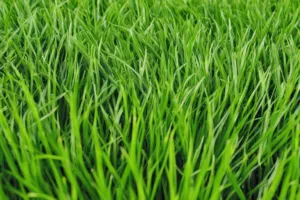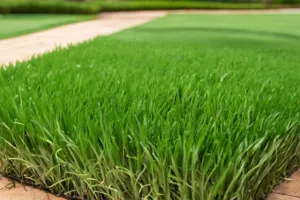
Introduction
The Intricacies of Grass
Grass, often taken for granted, plays a pivotal role in our environment and daily lives. From the lush lawns beautifying our homes to the vast fields supporting agriculture, the grass is more than just greenery underfoot. It’s a complex organism, a marvel of nature, with a fascinating and crucial science for those keen on cultivating the perfect lawn. Understanding this science, especially regarding cool-season grasses, can transform how we approach lawn care, ensuring healthier, greener spaces.
The Focus on Cool-Season Grasses
For homeowners in the Northern United States, the choice of grass is not merely about aesthetics. It’s about selecting a type that can withstand the region’s unique climate challenges, from frosty winters to mild summers. As the name suggests, cool-season grasses have evolved to thrive in these conditions. But what makes them so resilient? And how can understanding their science benefit homeowners? This article delves deep into cool-season grasses, unraveling their mysteries and offering insights for optimal lawn care in Northern climates.
What are Cool-Season Grasses?
Defining Cool-Season Grasses
Cool-season grasses are a group of turfgrasses that have adapted to thrive in regions with distinct seasonal changes, particularly areas with cold winters and moderate summers. These grasses have a unique growth pattern, with their most active growth phases occurring during the cooler parts of the year, specifically in the spring and fall.
This contrasts with warm-season grasses, which grow most vigorously during the hot summer. The ability of cool-season grasses to flourish during cooler temperatures is a result of their evolutionary adaptations, enabling them to capture the limited warmth and sunlight available during these periods.
Characteristics Setting Them Apart
One of the most distinguishing features of cool-season grasses is their deep green color, which they maintain for a significant portion of the year, especially during their peak growth phases. Their root systems are also designed to grow actively during cooler periods, allowing them to establish quickly in the spring and recover from potential summer stresses.
Additionally, these grasses typically have a finer texture than their warm-season counterparts. Popular cool-season grasses include Kentucky Bluegrass, Perennial Ryegrass, Fine Fescues, Tall Fescue, and Bentgrass. These grasses offer unique characteristics, making them suitable for various applications and environments within Northern climates.
The Biology of Grass
Anatomy 101: Roots, Stems, Leaves, and Seed Heads
At the foundational level, grasses, like other plants, consist of roots, stems, and leaves. The roots anchor the grass into the soil, absorbing water and essential nutrients. These roots can vary in depth, with some cool-season grasses, like Tall Fescue, boasting deep root systems that enhance their drought resistance. Above the ground, the stem, often called the ‘blade’ in grasses, plays a crucial role in photosynthesis, capturing sunlight and converting it into energy.
This energy is vital for the grass’s growth and survival. The leaves, an extension of the blade, further aid in photosynthesis. The seed heads or inflorescences are the grass’s reproductive parts, ensuring its species’ continuation.
Photosynthesis and Grass: A Vital Relationship
Photosynthesis in the grass is a fascinating process. Grass blades contain chlorophyll, a green pigment responsible for capturing sunlight. When sunlight hits the blades, the chlorophyll absorbs the light’s energy, converting carbon dioxide from the air and water from the soil into glucose, a type of sugar. This glucose provides the energy grass needs to grow. Oxygen is released as a byproduct, which benefits the environment.
Cool-season grasses have adapted their photosynthetic processes to be efficient even in lower light conditions, typical of cooler months. This adaptation allows them to grow actively during spring and fall, even when sunlight might be limited.
The Role of Chlorophyll: More Than Just Color
Chlorophyll doesn’t just give the grass its green color; it’s the heart of the photosynthesis process. Beyond its role in energy production, chlorophyll also protects the grass from the harmful effects of ultraviolet (UV) radiation. In cool-season grasses, the presence of chlorophyll ensures that they can maintain their vibrant green hue throughout most of the year, especially during their peak growth periods.
This green color is aesthetically pleasing; it indicates a healthy, well-functioning grass plant. When the grass starts to lose its greenness, it can be a sign of stress or poor health, signaling issues like nutrient deficiencies or diseases.
Understanding Growth Patterns and Dormancy
Grass, like all living organisms, has periods of active growth and periods of rest or dormancy. The active growth phases align with spring and fall cooler temperatures for cool-season grasses. The grass will increase during these times, producing new blades and deepening its root system. However, when faced with the heat of summer or the deep cold of winter, cool-season grasses might enter a dormant state.
Dormancy is a protective mechanism, allowing the grass to conserve energy and resources. The grass might appear brown or tan during dormancy, but this doesn’t mean it’s dead. With the return of favorable conditions, the grass can “wake up” from its dormant state and resume active growth. Understanding these growth patterns is essential for effective lawn care, guiding mowing, watering, and fertilization decisions.
Why Cool-Season Grasses Thrive in the North
Adaptations to Temperature Fluctuations
Cool-season grasses have evolved to thrive in regions where temperatures fluctuate significantly between seasons. Their cellular structures and metabolic processes are fine-tuned to make the most of cooler temperatures. During the colder months, these grasses can continue photosynthesis at lower rates, allowing them to store energy for growth spurts in the spring and fall. This starkly contrasts warm-season grasses, which often go dormant during cooler periods. The ability of cool-season grasses to maintain active growth during these transitional seasons ensures they can quickly recover from any summer stresses and prepare for the winter ahead.
Furthermore, the deep root systems of many cool-season grasses, such as Tall Fescue, allow them to access water and nutrients from deeper soil layers. This sustains them during colder periods and protects them against frost damage. The roots act as a reservoir, storing energy and nutrients, ensuring the grass is ready to spring back to life once conditions become favorable.
Benefiting from Northern Soil Composition
The soil composition in many Northern regions is often rich in organic matter, providing a fertile ground for cool-season grasses to flourish. This richness results from the natural decomposition of fallen leaves, twigs, and other organic materials, which enriches the soil with essential nutrients over time. With their active growth phases in spring and fall, cool-season grasses can capitalize on this nutrient-rich environment, absorbing the essential minerals and compounds they need for robust growth.
Moreover, the frequent rainfall typical of many Northern areas ensures that the soil remains moist, providing a consistent water supply for these grasses. This consistent moisture and nutrient-rich soil create an environment where cool-season grasses can thrive, even when faced with fluctuating temperatures.
The Role of Daylight and Photoperiod Sensitivity
Another factor that plays a crucial role in the success of cool-season grasses in the North is the variation in daylight hours. As the seasons change, the length of day and night (photoperiod) also shifts. Cool-season grasses are sensitive to these changes in photoperiod, which can trigger specific growth responses. For instance, as the days start to lengthen in spring, these grasses are prompted to begin their active growth phase. Conversely, as days shorten in the fall, they prepare to store energy for the upcoming winter.
This sensitivity to photoperiod ensures that cool-season grasses align their growth patterns with the optimal environmental conditions of the Northern regions. By syncing their life cycles with the natural rhythms of their environment, these grasses can ensure their survival and continued prosperity, year after year.
Natural Resistance to Common Northern Pests and Diseases
Over time, cool-season grasses have also developed resistance to some of the common pests and diseases prevalent in Northern climates. For instance, Kentucky Bluegrass is naturally resistant to certain fungal infections that might be more common in cooler, moist environments. This natural defense mechanism ensures these grasses can maintain their health and vitality even when faced with potential threats.
By understanding these factors and their intricate interplay, homeowners can better appreciate the resilience and adaptability of cool-season grasses. It’s not just about choosing grass that looks good; it’s about selecting grass that is harmoniously attuned to its environment, ensuring a lush and vibrant lawn throughout the year.
Benefits of Cool-Season Grasses for the Environment
Carbon Sequestration: Grasses as Carbon Sinks
One of the most significant environmental benefits of cool-season grasses is their ability to act as carbon sinks. Through photosynthesis, grasses absorb carbon dioxide (CO2) from the atmosphere and convert it into glucose, which they use for energy. The excess carbon is stored in their roots, stems, and leaves. Over time, as these plant parts decompose, the carbon is transferred to the soil, effectively locking it away and reducing the overall levels of CO2 in the atmosphere. Given the current concerns about global warming and the increasing levels of atmospheric CO2, the role of grasses in carbon sequestration cannot be overstated. By maintaining healthy lawns and grasslands, we can actively contribute to mitigating the effects of climate change.
Erosion Control and Soil Stabilization
Cool-season grasses, with their dense growth patterns and deep root systems, prevent soil erosion. The roots of these grasses bind the soil particles together, ensuring that they remain in place even during heavy rainfall or strong winds. This is particularly important in areas prone to erosion, such as slopes or riverbanks. By stabilizing the soil, cool-season grasses not only prevent the loss of valuable topsoil but also reduce the runoff of sediments into waterways. This helps maintain the water quality of rivers and streams, ensuring a healthier aquatic ecosystem.
Water Filtration and Groundwater Recharge
Grasslands and lawns act as natural filters, purifying rainwater as it percolates through the soil. As water moves through the dense mat of grass roots and soil, impurities, pollutants, and excess nutrients are filtered out. This natural filtration process ensures that the groundwater reserves are replenished with clean water, free from contaminants. In regions where groundwater is a primary source of drinking water, maintaining healthy grasslands can directly impact the quality of water available to communities.
Supporting Biodiversity: A Habitat for Flora and Fauna
Grasslands, whether natural or man-made, are teeming with life. Cool-season grasses provide a habitat for many organisms, from microscopic soil bacteria to larger animals like birds and mammals. The dense foliage offers insect shelter and food, attracting birds and other predators. The roots of the grasses interact with fungi and bacteria, forming symbiotic relationships that benefit both parties. By supporting such a diverse range of life forms, cool-season grasses play a pivotal role in maintaining the ecological balance of an area.
Temperature Regulation and Urban Heat Island Mitigation
In urban areas, where concrete and asphalt dominate the landscape, temperatures can soar, leading to the ‘urban heat island’ effect. Lawns and green spaces, dominated by cool-season grasses, can help mitigate this effect. The grass blades reflect sunlight and, through transpiration, release water vapor, cooling the surrounding air. This natural air conditioning effect can significantly reduce temperatures in urban areas, making them more livable and reducing the energy consumption of buildings.
In conclusion, while the aesthetic appeal of cool-season grasses is undeniable, their environmental benefits are equally, if not more, significant. By understanding and appreciating these benefits, homeowners and city planners can make informed decisions, ensuring a greener, healthier future for all.
Choosing the Right Cool-Season Grass for Your Lawn
Understanding Your Lawn’s Unique Needs
Before diving into the specifics of each cool-season grass type, it’s essential to assess your lawn’s unique needs and conditions. Factors such as soil quality, sunlight availability, water access, and foot traffic can significantly influence which grass type will thrive best. For instance, if your lawn is predominantly shaded, opting for shade-tolerant grass like Fine Fescues would be ideal. On the other hand, if your lawn is exposed to direct sunlight for most of the day, Kentucky Bluegrass might be a better fit. By taking the time to understand your lawn’s specific conditions, you can ensure that you select a grass type that will not only survive but thrive.
Popular Cool-Season Grasses: A Brief Overview
While numerous cool-season grasses are available, a few stand out due to their adaptability, beauty, and resilience, here’s a quick rundown:
- Kentucky Bluegrass: Known for its lush green color and fine texture, Kentucky Bluegrass is a favorite for many homeowners. It’s best suited for areas with full sunlight and requires regular watering. However, its beauty and soft texture make it worth the effort.
- Perennial Ryegrass: This grass type is known for its rapid growth and ability to establish quickly. It’s often mixed with other grass types to provide a thicker lawn. Perennial Ryegrass is also wear-resistant, making it suitable for lawns that experience heavy foot traffic.
- Fine Fescues: A group of grasses, including Chewings Fescue, Hard Fescue, and Creeping Red Fescue, these are known for their shade tolerance. They have a fine texture and can thrive in less fertile soils.
- Tall Fescue: With its deep root system, Tall Fescue is drought-resistant and can handle heat better than some other cool-season grasses. It has a coarser texture but is known for its durability and low maintenance needs.
- Bentgrass: Often seen on golf courses, Bentgrass has a very fine texture and can be mowed to a very short height. It requires a lot of maintenance but offers a carpet-like appearance when cared for properly.
Factors to Consider When Making Your Choice
While the characteristics of each grass type are essential, aligning them with your lawn’s conditions and maintenance preferences is crucial. Here are some factors to consider:
- Soil Quality: Some grasses, like Fine Fescues, can thrive in less fertile soils, while others, like Kentucky Bluegrass, prefer nutrient-rich grounds.
- Sunlight: Assess the amount of direct sunlight your lawn receives. Grasses like Kentucky Bluegrass thrive in full sun, while Fine Fescues can handle shaded areas.
- Water Availability: If you live in an area with water restrictions or want to conserve water, opt for drought-resistant varieties like Tall Fescue.
- Maintenance Preferences: If you’re looking for a low-maintenance lawn, Bentgrass might not be the best choice due to its high care requirements. Instead, consider grasses that align with the time and effort you’re willing to invest in lawn care.
Consulting with Experts
While research and self-assessment are invaluable, consulting with local nurseries, agricultural extensions, or lawn care professionals can provide tailored advice. These experts deeply understand the local climate, soil types, and everyday challenges. By seeking their insights, you can make a more informed decision, ensuring that the grass you choose perfectly suits your lawn’s unique conditions.
Frequently Asked Questions (FAQs)
What are cool-season grasses?
Cool-season grasses are turfgrasses adapted to thrive in regions with cold winters and moderate summers. They grow most actively during the cooler parts of the year, specifically in the spring and fall. Examples include Kentucky Bluegrass, Perennial Ryegrass, and Fine Fescues.
Why are cool-season grasses ideal for Northern regions?
These grasses have evolved to flourish in areas with distinct seasonal changes, particularly cold winters and mild summers. Their growth patterns, deep root systems, and photoperiod sensitivity make them resilient to Northern climates.
How do cool-season grasses benefit the environment?
Cool-season grasses act as carbon sinks, absorbing CO2 from the atmosphere. They also prevent soil erosion, purify rainwater, support biodiversity, and help in temperature regulation, mitigating the ‘urban heat island’ effect.
How do I choose the right cool-season grass for my lawn?
Consider factors like soil quality, sunlight availability, water access, and maintenance preferences. It’s also beneficial to consult with local nurseries or lawn care professionals for tailored advice.
What’s the significance of photosynthesis in grass?
Photosynthesis allows grass to capture sunlight and convert it into energy, essential for its growth. It also plays a role in carbon sequestration, helping reduce atmospheric CO2 levels.
Can cool-season grasses handle summer heat?
While cool-season grasses thrive in cooler temperatures, many have adaptations to withstand summer stresses. For instance, their deep root systems can access water from deeper soil layers, providing some drought resistance.
Why is my cool-season grass turning brown?
Brown patches can be a sign of dormancy, a protective mechanism grasses use to conserve energy during extreme conditions like deep cold or intense heat. However, it can also indicate issues like diseases, pests, or nutrient deficiencies.
Are there future developments expected in cool-season grasses?
Yes, with advancements in agricultural science and biotechnology, we might see grass varieties with enhanced drought resistance, fewer fertilizer needs, and better erosion control in the future.
Conclusion
The Significance of Informed Choices
The journey of understanding cool-season grasses, from their biology to their environmental benefits, underscores the importance of making informed choices when it comes to lawn care. A lawn is more than just a patch of green; it’s a living ecosystem that interacts with its environment, influencing and being influenced by it. By choosing the right grass type for our lawns, we’re not just ensuring a beautiful outdoor space but also contributing positively to the environment. The carbon sequestration, water filtration, and biodiversity support that grasses offer are invaluable in today’s world, where ecological balance is paramount.
Moreover, a well-maintained lawn can be a source of pride and joy for homeowners. It can serve as a space for relaxation, recreation, and even social gatherings. The aesthetic and functional benefits of a lush, green lawn can significantly enhance the quality of life, making the effort and research invested in choosing the right grass type well worth it.
Looking Ahead: The Future of Lawn Care
As we move forward, the world of lawn care is set to evolve, with sustainability and eco-friendliness becoming central themes. The knowledge we’ve gained about cool-season grasses and their benefits positions us well to embrace this future. By opting for grass types that are water-efficient, reduce carbon footprints, and support local biodiversity, we can ensure that our lawns are not just beautiful but also environmentally responsible.
Furthermore, with advancements in agricultural science and biotechnology, we might soon have access to even more resilient and eco-friendly grass varieties. These future grasses could offer enhanced drought resistance, require fewer fertilizers, and even combat soil erosion more effectively. As homeowners and lawn enthusiasts, staying updated on these developments and being open to adopting new practices will be key.
In wrapping up, the journey of understanding and choosing the right cool-season grass for our lawns is a testament to the intricate and beautiful relationship between nature and human spaces. By making informed, conscious choices, we can ensure that this relationship is harmonious, sustainable, and beneficial for all. Whether you’re a seasoned lawn care expert or a newbie just starting out, the world of cool-season grasses offers endless possibilities and learnings. Embrace the journey, cherish the green, and look forward to a future where our lawns are not just spaces of beauty but also pillars of ecological balance.

Bob Green, a passionate lawn care enthusiast with over two decades of landscaping experience, is this website’s proud owner. His vast knowledge of horticulture and dedication to helping homeowners maintain beautiful lawns are reflected in the valuable content he shares on his platform. John has always been interested in Agrostology.









